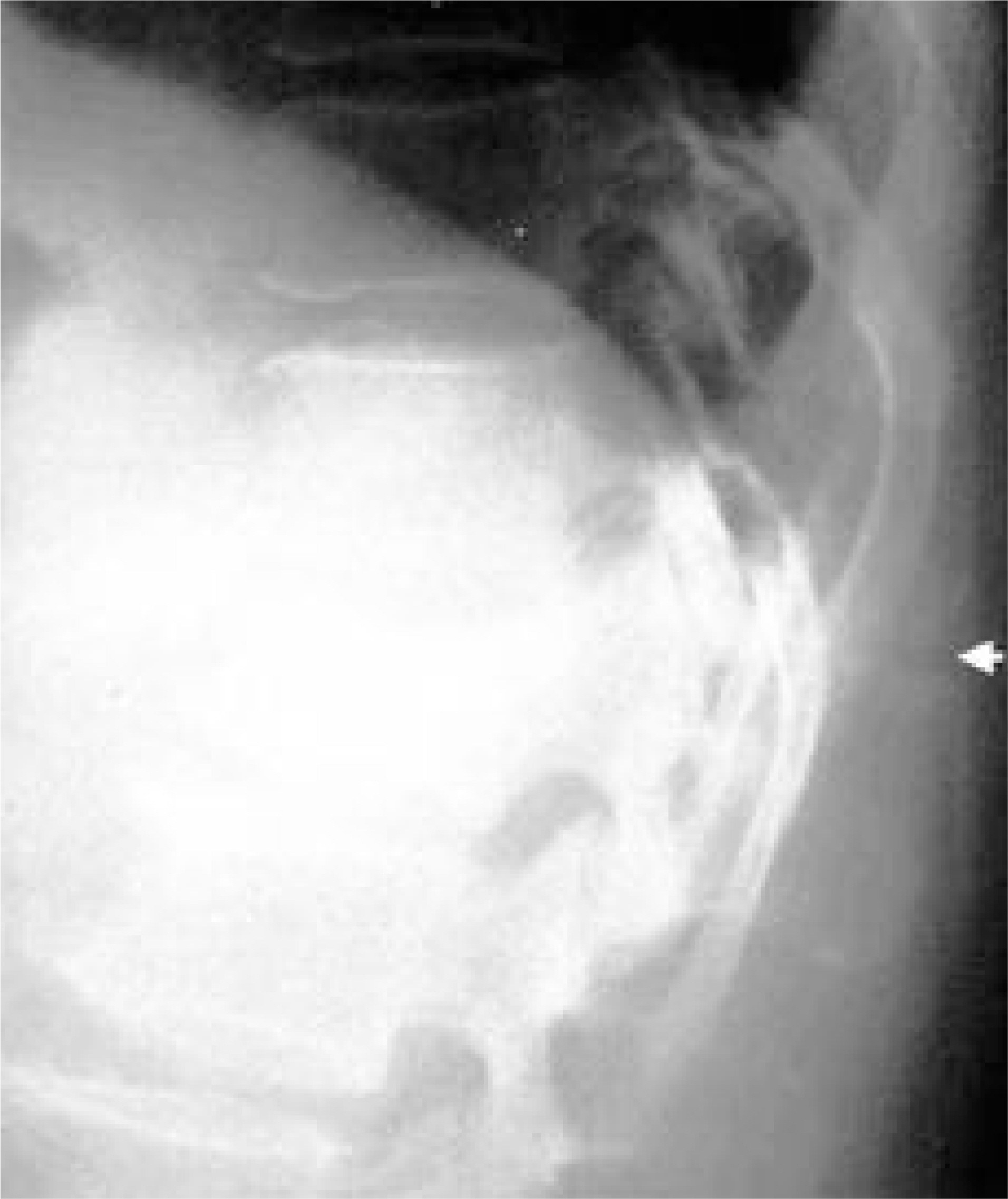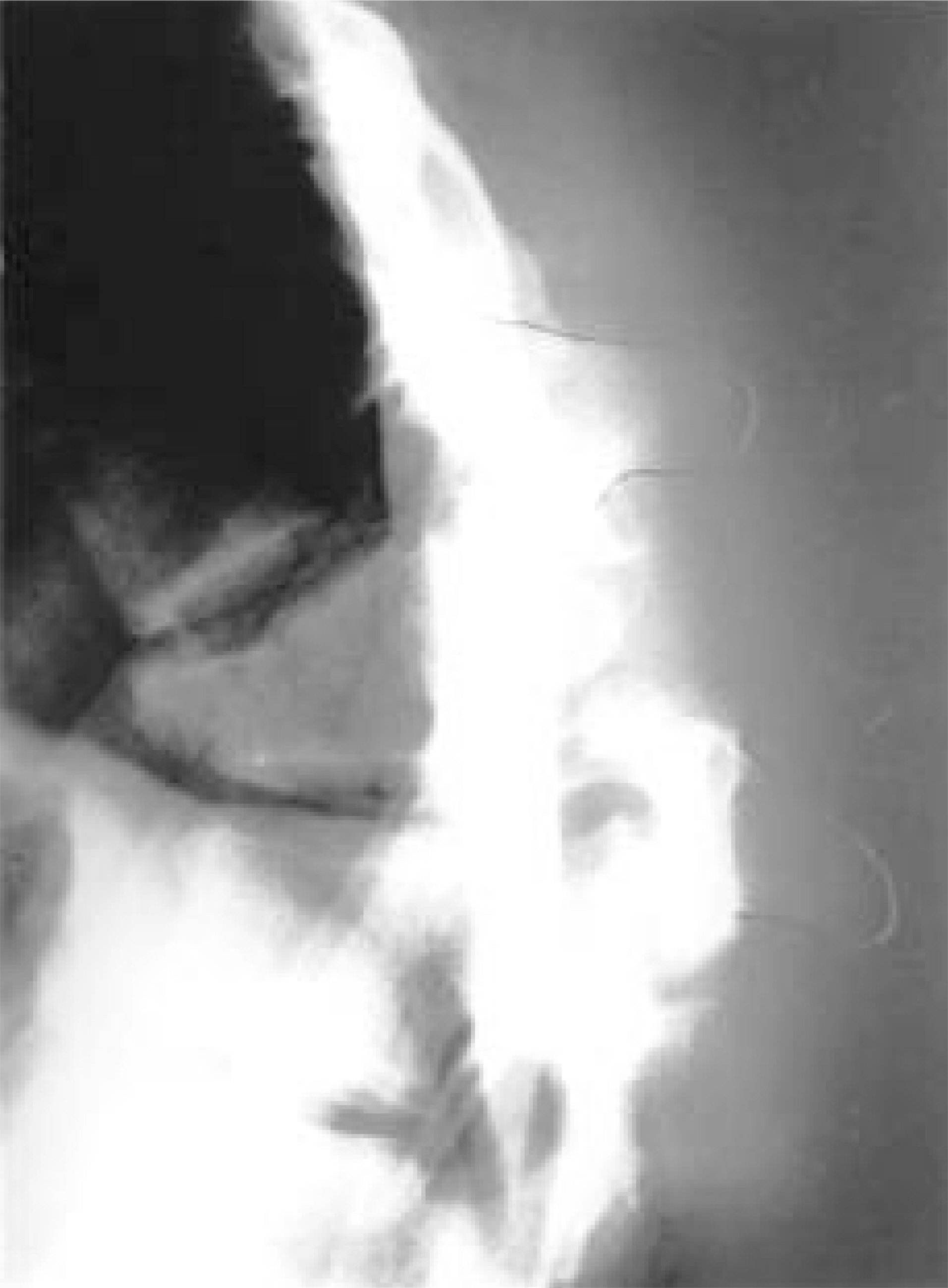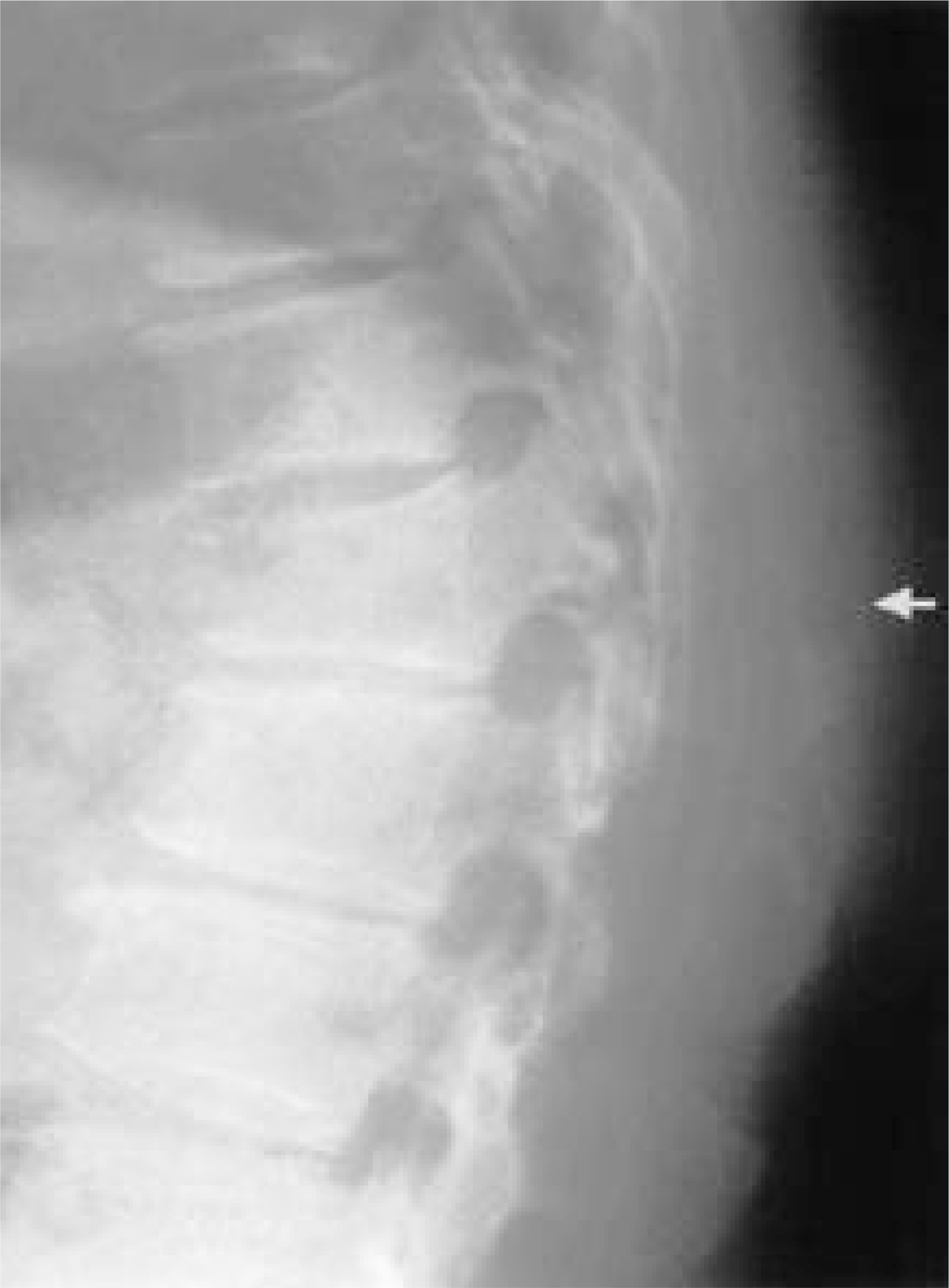J Korean Soc Spine Surg.
2004 Jun;11(2):113-120. 10.4184/jkss.2004.11.2.113.
Distribution and Patterns of Posterior Column Injury in Flexion-Distraction Injuries of Thoracolumbar Spine
- Affiliations
-
- 1Department of Orthopaedic Surgery, College of Medicine, Chungbuk National University, Cheongju, Korea. kds@chungbuk.ac.kr
- KMID: 2097818
- DOI: http://doi.org/10.4184/jkss.2004.11.2.113
Abstract
- STUDY DESIGN: A retrospective analysis of the distribution and patterns of posterior column injury in flexion-distraction injuries of the thoracolumbar spine.
OBJECTIVES
To recognize the various types of posterior column injury in terms of the path of the distraction force in flexion-dis-traction injuries of the thoracolumbar spine. SUMMARY OF LITERATURE REVIEW: As posterior column injuries are associated with instability of the spine, many authors have described and classified posterior column injuries. However, there are no descriptions or classifications in terms of the path of the distraction force in the literature. MATERIALS AND METHOD: The preoperative plain X-rays, axial CT, MRI (in 5 patients) and operation records of 34 patients were reviewed in relation to the patterns of posterior column injury.
RESULTS
Posterior column injuries can be classified into two main types. In Type I(30/34), the distraction failure started from the spinous process one level above the fractured body (Type IA) or the posterior ligament complex between the spinous processes of the fractured and the level above (Type IB). In Type II(4/34), the distraction failure started from the spinous process of the fractured vertebra and from the interspinous ligament between the fractured level and the level below.
CONCLUSIONS
Posterior column injuries can be described according to their starting point and the extent of the distraction force. Of these, Type IB was the most common. Using this classification, the injury of the posterior column in injuries of the thora-columbar spine fracture can be predicted.
Keyword
Figure
Reference
-
1). Whitesides TE Jr. Traumatic kyphosis of the thoracolumbar spine. Clin Orthop. 1977; 128:78–91.
Article2). Liu YJ, Chang MC, Wang ST, Yu WK, Liu CL, Chen T H. Flexion-distraction injury of the thoracolumbar spine. Injury. 2003; 34:920–923.
Article3). Holdsworth FW. Fractures, dislocations, and fracture-dislocations of the spine. J Bone Joint Surg. 1970; 52A:1534–1551.
Article4). Denis F. Spinal instability as defined by the three-column spine concept in acute spinal trauma. Clin Orthop. 1984; 189:65–76.
Article5). Denis F. The three column spine and its significance in the classification of acute thoracolumbar spinal injuries. Spine. 1983; 8:817–831.
Article6). Kaufer H, Hayes JT. Lumbar fracture dislocation. a study of twenty-one cases. J Bone Joint Surg. 1966; 48A:712–730.7). McAfee PC, Yuan HA, Lasda NA. The unstable burst fracture. Spine. 1982; 7:365–373.
Article8). Shin BJ, Kim SK, Lee BI, Kim YI, Rah SK, Choi CU. Posterior column injuries in thoracolumbar and lumbar burst fracture. J Kor Spine Surg. 1997; 4:67–73.9). Shin BJ, Kim BW, Kim YI, Rah SK. Difference of fracture patterns by the level of the thoracolumbar burst fracture. J Kor Spine Surg. 1998; 5:47–52.10). Berry JL, Moran JM, Berg WS, et al. A morphometic study of human lumbar and selected thoracic vertebrae. Spine. 1987; 12:362–366.11). Daffner RH, Deeb ZL, Goldberg AL, Kanada barow A, Rothfus WE. The radiologic assessment of post-traumatic vertebral stability. Skeletal radiol. 1990; 19:103–108.
Article12). Abe E, Sato K, Shimada Y, Mizutani Y, Chiba M, Ok uyama K. Thoracolumbar burst fracture with horizontal fracture of the posterior column. Spine. 1997; 22:83–87.
Article13). Gumley G, Taylor TKA, Ryan MD. Distraction fractures of the lumbar spine. J Bone Joint Surg. 1982; 64B:520–525.
Article14). Gertzbein SD, Court-Brown CM. Fle xi on-distraction injuries of the lumbar spine. Clin Orthop. 1988; 227:52–60.15). Terk MR, Hume-Neal M, Fraipont M, Ahmadi J, Col-letti PM. Injury of the posterior ligament complex in patients with acute spinal trauma: evaulation by MR imaging. Am J Roentgenol. 1997; 168:1481–1486.16). Haba H, Taneichi H, Kotani Y, et al. Diagnostic accura -cy of magnetic resonance imaging for detecting posterior ligamentous complex injury associated with thoracic and lumbar fracture. J Neurosurg. 2003; 99:20–26.17). Kliewer MA, Gray L, Paver J. Acute spinal ligament disruption: MR imaging with anatomical correlation. J Magn Reson Imaging. 1993; 3:855–861.18). Saifuddin A, Noordeen H, Taylor BA, Bayley I. The Role of imaging in the diagnosis and management of thoracolumbar burst fractures: current concepts and a review of the literature. Skeletal Radiol. 1996; 25:603–613.
Article19). Moon SH, Park MS, Suk KS, et al. Feasibility of ultra -sound examination in posterior ligament complex injury of thoracolumbar spine fracture. Spine. 2002; 27:2154–2158.
- Full Text Links
- Actions
-
Cited
- CITED
-
- Close
- Share
- Similar articles
-
- Burst Fracture with Distraction Injury in the Posterior Column of the Thoracolumbar Spine
- Fracture of Vertebral Body in Flexion-Distraction Injury of Thoracolumbar Spine
- Thoracolumbar Spine Injury
- Short Segment Fixation of Flexion-Distraction Injuries in Thoracolumbar Spines
- Comparision of Classifications in the Thoracolumbar Burst Fractures






